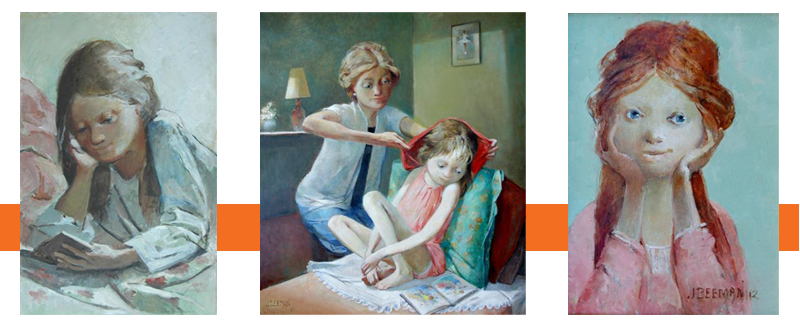On the eve of the opening of his major solo exhibition, we thought we would revisit the technique used by John Beeman in his work. A difficult and unforgiving technique that he makes look effortless; gesso is a traditional method used in Europe around the Renaissance era and is almost a forgotten art. His special skill is defining the subtle interplay of personalities and encapsulating that moment in oil on gesso.
Visit the exhibition on line John Beeman Exhibition Red Hill Gallery.
Apart from painting on walls, artists have been very limited in their choice of surface on which to paint.
There are two main surfaces which have remained unchanged for several hundred years. These are: – a fabric, usually canvas, stretched on a timber frame or a wooden panel. Both have to be coated with a primer, usually a white paint or gesso. Both of these have the added advantage of being portable. Each of the above have disadvantages as follows: – The flexible nature of the canvas has the potential to crack the paint surface and it is vulnerable to cuts and bumps and humidity and unstable atmosphere can have a harmful effect
on the painting.
Timber panels are limited in size, subject to warping and splitting and attacks by insects (borer and woodworm.)
Modern technology has produced materials that are dimensionally and chemically stable and can be obtained in large sheets. They suffer few of the disadvantages of canvas or timber.
During the years that I was doing my Post Graduate Studies in London at the Slade School of Fine Art. I was aware that while I was receiving a thorough grounding in the skills of drawing and painting, the information on painting materials was superficial and largely dependent on the range of choices in the art material suppliers.
I applied for one of the few positions at the prestigious Courtauld Institute. I was fortunate to be accepted, with three other like-minded students, to be trained in their laboratories in the chemistry and structure of painting. A further stroke of luck was at that time a Dutch conservator was working at the Courtauld Institute restoring a Flemish Painting for the National Gallery. He was an expert in the preparation of gesso and was keen to share his knowledge.
On returning to Australia I made gesso in the ‘time-honoured’ method, preparing the gesso with rabbit skin glue and calcium carbonate. There were five or six coats brushed on with a large flat brush, each at right angles to the last. The temperature of the gesso mixture had to be maintained within critical limits, allowed to set but not dry. In all
there were sixteen steps and it was very time consuming.
I continued preparing gessos this way until my son David developed equipment which was capable of applying the hot mixture while maintaining the critical temperature and viscosity.
The structure of the surface is all one could wish for and is physically and chemically stable.
The white gesso has great optical qualities reflecting the light back through paint layers. It is rugged and stands a certain degree of aggressive technique or a sensitive response to a fine application of glazes.
As well as oils these gessos can also be used for egg tempera or acrylic. John Beeman






